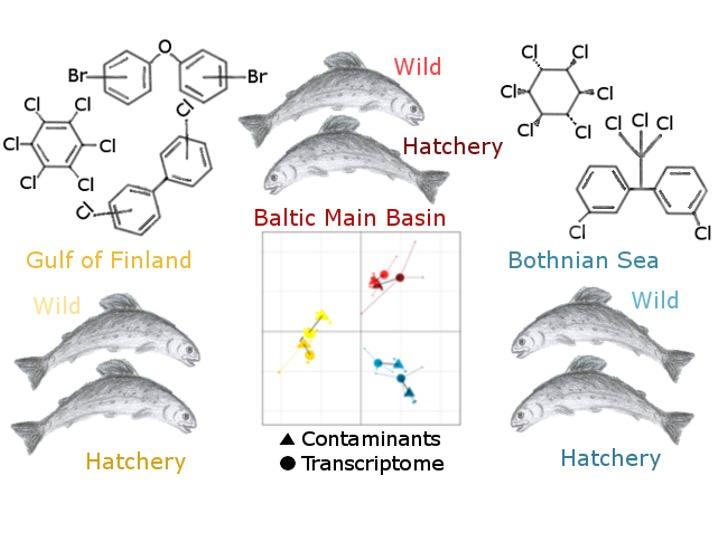
Credit: Reprinted with permission from Environmental Science & Technology. © 2020 American Chemical Society
Hatchery-reared Atlantic salmon (Salmo salar) have been released to support the wild salmon stocks in the Baltic Sea for decades. During their feeding migration, salmon are exposed to organohalogen compounds (OHCs). Here, we investigated the OHC levels and transcriptome profiles in the liver of wild and hatchery-reared salmon collected from the Baltic main basin, the Bothnian Sea, and the Gulf of Finland and examined whether salmon origin and OHC levels contributed to the hepatic transcriptome profiles. There were no differences in the OHC concentrations and transcriptome profiles between wild and hatchery-reared fish but there were large differences among the areas. Several transcript levels were associated with polychlorinated biphenyls, chlordanes, and dichlorodiphenyltrichloroethane in a concentration-dependent manner. When comparing the different areas, lipid metabolism, environmental stress, cell growth and death-related pathways were enriched in the liver transcriptome. Coinertia analysis, a multivariate method, showed that the covariation in the OHC levels and the transcriptome were significantly similar. These results suggest that the hepatic transcriptomes in wild and hatchery-reared salmon are more affected by the OHC level than the salmon’s origin. This paper was published in an American Chemical Society Journal, Environmental Science and Technology on November 9, 2020.
###
Media Contact
Public Relations Division
[email protected]
Related Journal Article
http://dx.




